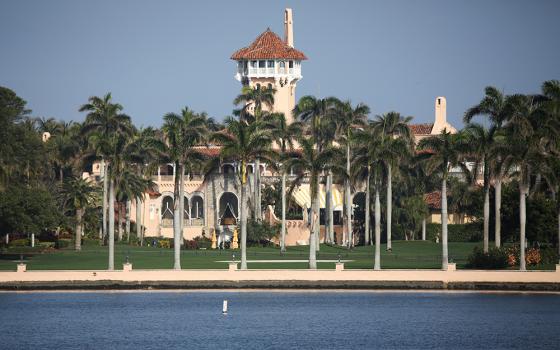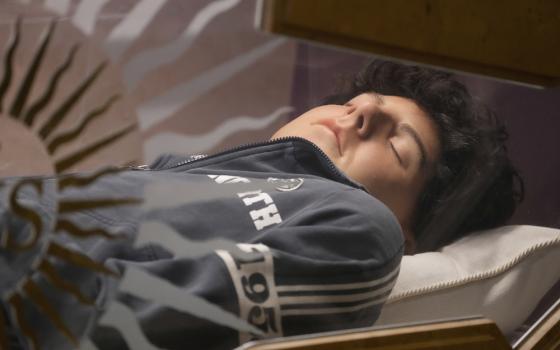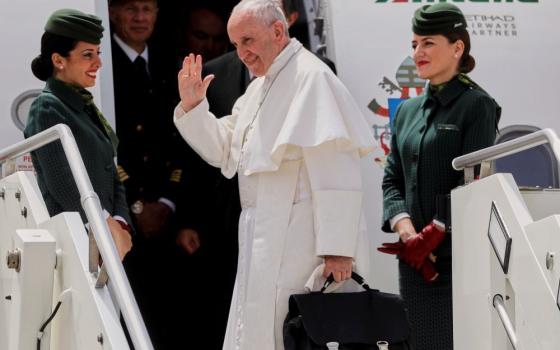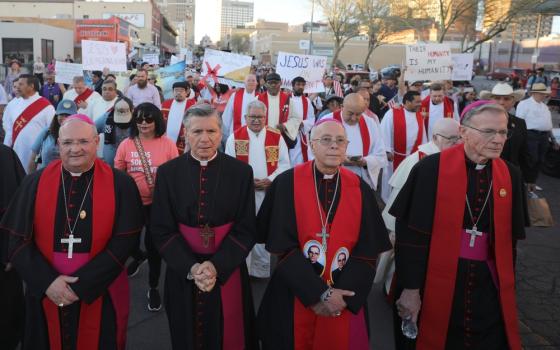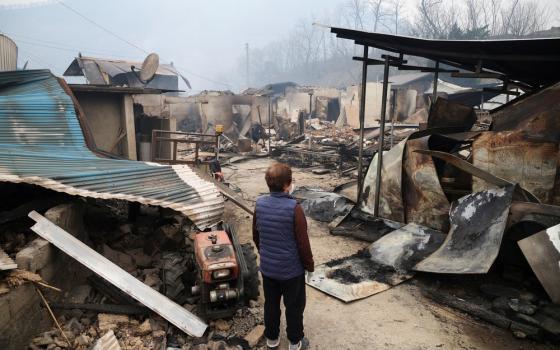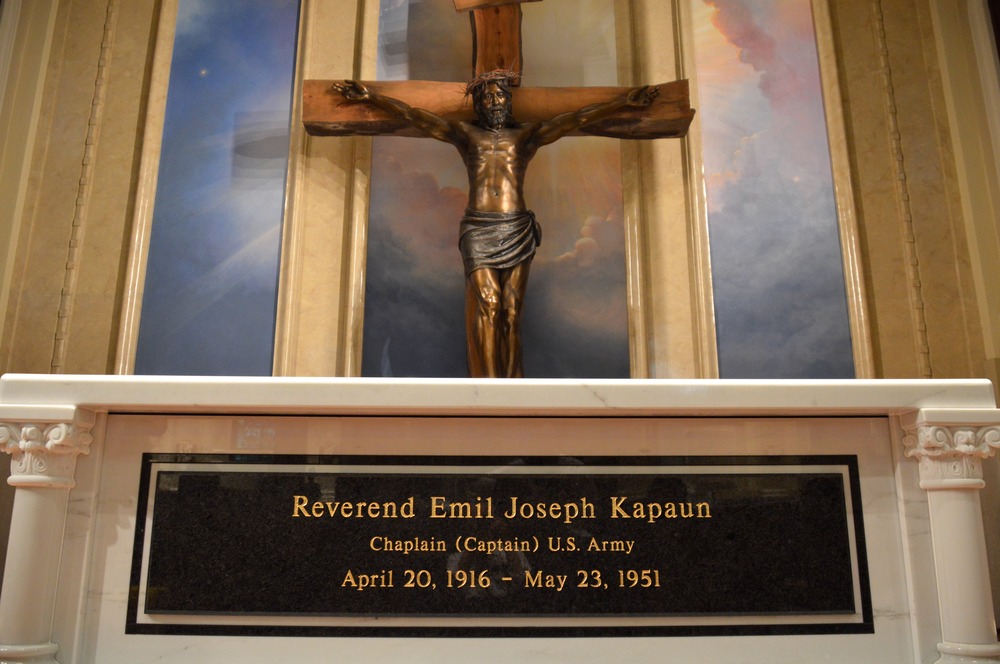
The tomb of Fr. Emil Kapaun is seen in the Cathedral of the Immaculate Conception in Wichita, Kan., Sept. 29, 2021. While he continued treatment at Rome's Gemelli hospital, Pope Francis issued a series of decrees regarding several sainthood causes Feb. 24, 2025, including for Kapaun, a U.S. Army military chaplain who died in a prisoner of war camp in North Korea in 1951. The pope recognized his sacrifice as an "offering of life," a category distinct from martyrdom that the pope established in 2017. (OSV News/Catholic Advance/Christopher Riggs)
A Kansas military chaplain who served during two wars is a step further along the path to possible sainthood, thanks to a declaration made by Pope Francis, currently in Rome's Gemelli hospital for severe respiratory illness.
On Feb. 24, the pope authorized the Vatican's Dicastery for the Causes of Saints to promulgate a decree naming Fr. Emil Kapaun as "Venerable."
Ordained in 1940 as a priest of the Diocese of Wichita, Kansas, Kapaun served as a U.S. Army chaplain in World War II and in the Korean War with the rank of captain.
The priest's tireless ministry, marked by constant danger to his life, culminated in a prisoner of war camp at Pyoktong, North Korea, where he blessed his communist captors before dying of pneumonia and a blood clot in 1951 at age 35. His cause for canonization was opened in 1993, giving him the title "Servant of God."
Bishop Carl Kemme of Wichita said in a statement that he joined "indeed every one of faith in giving thanks that Pope Francis has advanced his [Kapuan's] cause by declaring him to be Venerable."
"I encourage everyone to continue to pray for his intercession in every situation so that many more graces and divine favors will be received because of his powerful prayers. Venerable Emil Kapaun, pray for us!" the bishop said.
Archbishop Timothy Broglio of the U.S. Archdiocese for the Military Services, who is president of the U.S. Conference of Catholic Bishops, said that "it was a great joy to read the news this morning of the approval by the Bishop of Rome that Father Kapaun indeed sacrificed his life here in order to give life to others.
"At the Archdiocese we are looking forward to the next steps in this process to offer another witness of faith for the Church universal," Broglio said.
In its decree — which also addressed the canonization causes of six other individuals — the Vatican said it recognized Kapaun's "offering of life," a criterion for sainthood established by Francis in a 2017 motu proprio.
Distinct from the criteria for martyrdom and heroic virtue, the "offering of life" ("oblatio vitae") represents a voluntary sacrifice of one's life in the face of certain, untimely death, accompanied by the exercise of Christian virtues unto death. In his motu proprio, Francis described the offering as "inspired and sustained by charity" and expressing "a true, complete and exemplary imitation of Christ."
Kapaun entered the U.S. Army Chaplain Corps in July 1944, and in March 1945 was sent to Burma and India, where he logged thousands of miles by jeep to visit troops on the front lines. He was promoted to captain in 1946.
Advertisement
Four years later, he found himself among the first troops responding to communist North Korea's invasion of democratic South Korea. He shared the hardships of combat while offering Mass, often using the hood of his jeep as an altar. Kapaun also administered the sacraments to the dying at the risk of his life, while retrieving wounded soldiers. In 1950, one such rescue, conducted under intense enemy fire near Kumchon, South Korea, earned him a Bronze Star Medal for bravery in action.
The priest also wrote to the families of troops, assuring them that their fallen soldiers had received last rites from him.
Kapaun and his fellow troops were surrounded in November 1950 after Chinese forces entered the war. He initially escaped capture, but then chose to remain and tend the wounded with an Army medic. As a result, he was taken prisoner, but still managed to intervene to prevent the execution of a wounded soldier.
He encouraged his fellow captives along the arduous march to the Pyoktong prison camp. Once there, he continued to sustain them through his ministry, which was forbidden by the communist guards — for whom he prayed, leading the prisoners to do the same.
Kapaun also refuted the guards' attempts at communist indoctrination, responding to one taunt with, "God is as real as the air you breathe but cannot see; as the sounds you hear but cannot see; as the thoughts and ideas you have but cannot see or feel."
In 1951, Kapaun fell ill, and was forcibly moved to the camp's hospital, where patients were left to die. He stilled the protests of his fellow POWs, saying, "Don't worry about me. I'm going where I always wanted to go, and when I get there, I'll say a prayer for all of you."
Kapaun died on May 23, 1951. The 2021 return of his remains to the Cathedral of the Immaculate Conception in Wichita capped a sequence of seemingly providential events. His body was buried by a fellow prisoner near the Pyoktong prison camp infirmary, and repatriated to the U.S., along with the remains of some 560 Americans from the camp, in 1954 at the National Memorial Cemetery of the Pacific in Honolulu.
However, the priest's body — which for years lay under an "Unknown" marker with about 70 soldiers — was not identified until a fellow prisoner saw a picture of Kapaun in a Knights of Columbus magazine at a Veteran Affairs clinic in Florida in 2003. In 2021, DNA testing confirmed that the remains were those of Kapaun, and in September 2021, he was reinterred in Wichita's cathedral.
